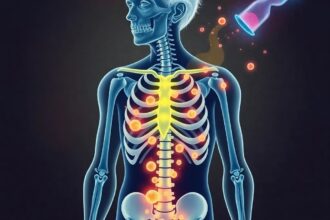Exploring the science of chrononutrition and its impact on metabolic health, circadian rhythms, and overall well-being through meal timing and composition strategies.
Discover how aligning meal times with your body’s natural rhythms can enhance glucose control, manage weight, and boost energy levels.
Introduction to Chrononutrition
Chrononutrition is an emerging field that studies the relationship between meal timing, circadian rhythms, and metabolic health. The concept is rooted in the understanding that our bodies operate on a 24-hour cycle, known as the circadian rhythm, which influences various physiological processes, including metabolism, digestion, and hormone regulation.
According to Dr. Satchin Panda, a leading researcher in circadian biology at the Salk Institute, Our bodies are designed to process food during the day and rest at night. Disrupting this natural cycle can lead to metabolic disorders such as obesity and diabetes.
The Science Behind Circadian Rhythms and Metabolism
Circadian rhythms are regulated by a master clock in the brain, known as the suprachiasmatic nucleus (SCN), which synchronizes with external cues like light and darkness. This clock also influences peripheral clocks in organs such as the liver, pancreas, and gut, which play crucial roles in metabolism.
Research published in the journal Cell Metabolism highlights that eating in alignment with circadian rhythms can improve glucose tolerance, reduce inflammation, and enhance weight loss.
This is because the body’s ability to metabolize nutrients fluctuates throughout the day, peaking during daylight hours and declining at night.
Benefits of Time-Restricted Eating
Time-restricted eating (TRE) is a popular chrononutrition strategy that involves consuming all daily calories within a specific window, typically 8-12 hours. This approach has been shown to improve metabolic health by aligning meal times with the body’s natural rhythms.
A study conducted by Dr. Panda and his team found that participants who practiced TRE experienced significant improvements in blood sugar levels, cholesterol, and body weight, even without changing their diet composition.
This suggests that when we eat may be just as important as what we eat.
Practical Tips for Implementing Chrononutrition
To harness the benefits of chrononutrition, consider the following strategies:
- Start your day with a nutrient-dense breakfast to kickstart your metabolism.
- Aim to finish your last meal at least 2-3 hours before bedtime to allow for proper digestion.
- Limit late-night snacking, as it can disrupt circadian rhythms and lead to weight gain.
- Experiment with time-restricted eating by gradually reducing your eating window to 8-10 hours.
Conclusion: Personalized Approaches to Meal Timing
While the principles of chrononutrition offer promising benefits, it’s important to recognize that individual needs may vary. Factors such as age, activity level, and medical conditions can influence how meal timing affects metabolic health. As Dr. Panda advises, Listen to your body and find a meal schedule that works best for you.
By aligning meal times with your body’s natural rhythms, you can optimize metabolic health, improve energy levels, and enhance overall well-being. The untapped potential of chrononutrition offers a new frontier in personalized nutrition, paving the way for healthier lifestyles.




